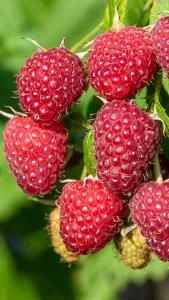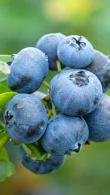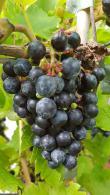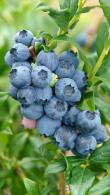Raspberries or Rubus Idaeus Fruiting Plants
Deciduous Fruiting Shrub
1. Add items to basket
2. Go to the basket
3. Enter your postcode in Delivery Price Check
Plant shape: Bush
Plant variety: Autumn Bliss
Pot size: 1.5 Litres
Plant ID: 13415 1
View plant size:Raspberries are small sweet red fruits that ripen in summer or autumn depending on the species. They have clusters of white flowers in spring or summer on thorny or smooth stems and they are tolerant of low winter temperatures in the UK.
Rubrus Idaeus is the thorny European red raspberry, but there are thornless and compact cultivars more suited to UK gardens.
All About Rubrus Idaeus – the European Raspberry
Rubrus Idaeus is the native European red raspberry. It grows wild in forests, but wild raspberry bushes are rare in the UK now. Most cultivars grown here have Rubrus Idaeus as a parent plant for hardiness.
Raspberry bushes are deciduous perennials with vigorous erect stems that can reach up to 2.5 metres in height. They have pinnately compound leaves with 5-7 leaflets and clusters of white star-shaped flowers on year-old stems in summer. Raspberry flowers are very popular with pollinators, and once pollinated, small hard green fruits begin to develop. They gradually ripen to rich ruby red fruits which are called berries, but are actually aggregate drupes that pull clear of thick white central stems.
Raspberries are full of vitamin C. They can be eaten straight from the bush, frozen, dried, or used in jam, wine, and cakes.
Raspberry Varieties and Cultivars
There are many raspberry cultivars, but the main difference to keep in mind is whether it’s a summer or autumn fruiting raspberry. Summer fruiting raspberry plants ripen from June to August, but autumn fruiters produce their raspberries in September through to October. On occasion, an autumn fruiter will produce a small summer harvest too.
A tasty summer fruiting raspberry bush for UK gardens is Glen Prosen and one of the best autumn harvest raspberries is the popular Autumn Bliss.
If you can’t decide between summer or autumn raspberry bushes, the yellow cultivar Fallgold is an excellent choice because it fruits from mid-summer into mid-autumn.
Thornless raspberry bushes
Thornless raspberry plants cut out the pain factor, but still produce lots of tasty sweet raspberries. RHS AGM winners Tulameen and Glen Ample are superb thornless raspberry cultivars. Glen Ample fruits in mid-summer and Tulameen in autumn. They extend the raspberry growing season for several months when they’re grown together.
Compact raspberry plants
Compact growers are best for containers. They are favourites for small urban gardens and patio growers. Cultivars such as Little Red Princess and Yummy are prolific fruiters with fruit production akin to full-sized raspberries.
How To Grow Raspberry Bushes
Raspberries are easy to grow. They need fertile, well-drained soil and lots of sunshine to ripen. If you have chalky or sandy soil, beef it up with lots of well-rotted organic matter. In hot spells, raspberries appreciate water and will flower abundantly if they’re kept moist, they do not like drying out.
Prune back summer fruiting raspberries after the harvest because they bear flowers on the previous year’s growth. Cutting back canes in summer gives them time to grow new productive canes ready for the following year. Autumn fruiters produce berries on the current year’s growth, so they can be pruned back in winter up until February before they begin to show new growth.
Raspberries appreciate lots of water and mulch in their growing seasons. Whilst they are hardy, the best harvest is produced by well-fed and watered bushes.












